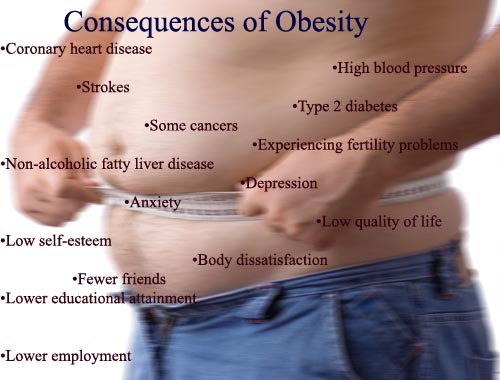Obesity
Obesity means having too much body fat. It is not the same as being overweight, which means weighing too much. A person may be overweight from extra muscle, bone, or water, as well as from having too much fat. Presentation of obesity may range from asymptomatic to presentation complicated by multiple comorbidities, including cancer, CAD, diabetes, hypertension, gout, obstructive sleep apnea, and osteoarthritis. The definitive test for the diagnosis of obesity remains the BMI (obesity is defined as a BMI >=30 kg-m^2). Central or abdominal obesity has a stronger association with obesity-related comorbidity than peripheral (i.e., subcutaneous) obesity, so waist circumference may be a better indicator of the risk for obesity-related comorbidity than BMI. The mainstay of nonsurgical treatment of obesity is diet and exercise, with psychological therapy as a recommended adjunct for all patients. The risk of complications is low, but the overall efficacy and durability of this combination is poor. Drug therapy may be considered as an adjunct to diet and exercise (never as monotherapy) for patients with a BMI >=30 kg-m^2. Pharmacotherapy has modest short-term efficacy but a high attrition rate and a lack of long-term efficacy. Surgical treatment is an option for patients with BMI >=40 kg-m^2, or >=35 kg-m^2 with significant comorbidities. In general, weight-reductive surgery works through manipulation of the stomach or small bowel, or a hybrid of both. Potential complications are numerous.
